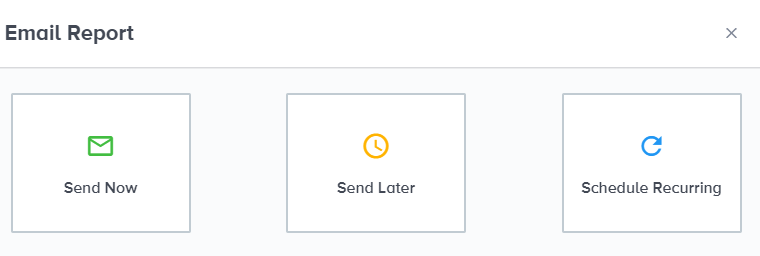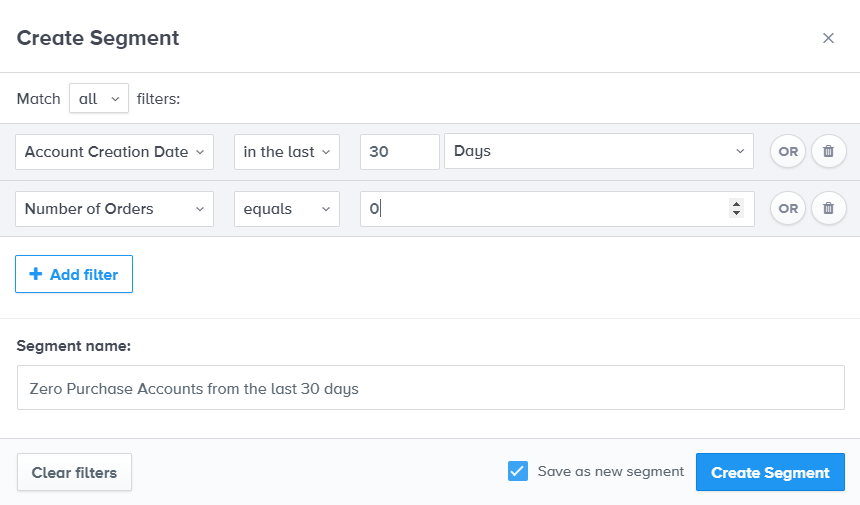
Marketing • Business

Retailers and marketers spend numerous hours every week on marketing reports to stay on top of their campaigns and performance. Data becomes an integral piece of operations, telling you exactly how you are performing. And whilst you may love the data because it directs you toward achieving success, you probably find the collection, organisation, and analysis to be tedious, sometime grueling tasks, even if you’re a data nerd (like me).
That’s where automated reporting comes in handy.
Automated reporting with custom segmentation provides you with the information you need without the long hours of gathering, configuring, and report preparation.
Many marketing agencies who manage campaigns and reporting on behalf of their ecommerce clients typically have a team of people who spend a significant amount of time collecting data and executing reports. When you’re doing it in house, it might be just you and a few others. And the hours spent on information gathering and report preparation means you’re unavailable to work on new campaigns or other projects.
Thus,
The biggest reason that store owners and marketing agencies alike turn to automated reporting is also its biggest benefit—the additional time and resources available to focus on the important (and profit-boosting) aspects of their retail business.
With automated reporting, you simply set up all of your reports and schedule them to be sent directly (and automatically) to your inbox. So, in addition to saving time and resources, this also means you’ll be able to:

For accurate, comprehensive (and automated!) reporting, you need to have a system that compiles information from all your various data sources:
Most advanced reporting tools will allow you to build your reports, save them and then schedule them to be sent to your inbox. (Note: If you're a Neto customer, you can do this all via Neto Analytics Studio using the Report Builder and Scheduler).
Segmentation is a key aspect of effective, personalised marketing strategies and using a data driven approach to fuel your marketing strategy is critical if you want to really be successful. Using segmentation allows you to pinpoint your reporting around specific, selected criteria, meaning you can drill down into the data you need to create meaningful campaigns with personalised, targeted messaging. Data you don’t need will be eliminated, and thus won’t confuse the outcome.
With ecommerce reporting, you can segment by any number of variables, but customer, product and order segmentation are a good place to start.
In Neto Analytics Studio you can can create custom segments based on 50+ filterable variables. Let’s say you wanted to create a segment of customers who created an account on your site in the last 30 days but have not yet placed an order. You can easily create this segment and export this list of customers at any time. We recently did a webinar about how to do Advanced Customer Segmentation in Neto Analytics Studio. Watch it now.

Segments can be either static (taken at one point in time so that the data remains unchanged), or dynamic (updates automatically over time as new data or customers are added), and saved for email marketing and advertising campaigns or scheduling automated reports.
Do you know what drives your businesses’ success? Every business must evaluate and understand these key metrics, and by using customised automated marketing reports, you’ll be able to analyse both the performance of your advertising campaigns and channels to determine ROI and Lifetime Value (LTV) by channel.
Great, but what does this tell me exactly?
With this information in your hands, you will be able to easily identify which marketing campaigns are performing well on which channels, and make informed, revenue-producing decisions.
So for example, you might realise that your Google Adwords campaign targeting ‘tshirts’ is performing better than your campaign targeting ‘shoes’, and that Google Adwords is performing better than your Facebook Ads for the same things.
Reports that are automated and customisable for social media ads, pay-per-click (PPC) advertising, SEO, and other marketing avenues help you further pinpoint areas for improving your marketing stategy and tactics.
When you use a business reporting and intelligence tool that is able to visualise data, automate reporting, and precisely target key segments, your team will save valuable time and be able to focus on strategy.
Neto Analytics Studio is a marketing tool that can provide real-time access to data, without the frustrations and loss of productivity of manual reporting, allowing you to capitalise on opportunities for improving results on a weekly, or even daily, basis.
Sign up for a free Neto trial to try Neto Analytics Studio, or check out our series of Analytics Webinars to learn more.